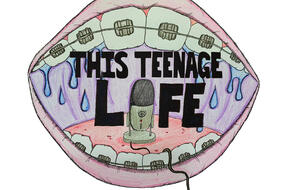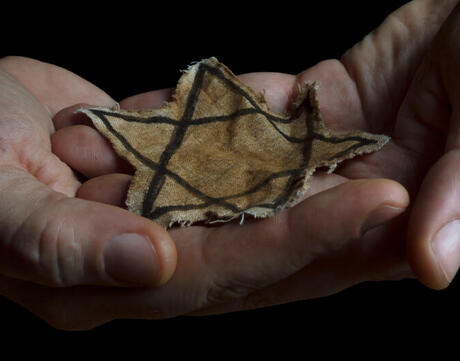
Holocaust Trivialization and Distortion
Subject
- History
- Social Studies
Grade
6–12Language
English — USPublished
Updated
Overview
About This Mini-Lesson
This mini-lesson introduces students to contemporary examples of Holocaust trivialization and distortion. Each activity takes approximately one class period to teach, and you can use the entire mini-lesson or a selection of activities best suited to your students. If you are teaching students who have not had prior Holocaust education, consider first using our Holocaust and Human Behavior resources to better prepare students for this mini-lesson.
This mini-lesson is designed to be adaptable. You can use the activities in sequence or choose a selection best suited to your classroom. It includes:
- 3 activities
- Student-facing slides
- Recommended articles for exploring this topic
While Holocaust allusions have typically been used to compare political leaders or acts to Hitler and the Nazis, a current trend has surfaced where groups who believe they are being oppressed or persecuted liken themselves to Jews during the Holocaust. For example, shortly after the February 2022 Russian invasion of Ukraine, a Russian propaganda video on a state-run media channel declared Russians “the new Jews.” 1 In European, Canadian, and US cities during the COVID-19 pandemic, some groups protesting mask and vaccine mandates have compared these public health responses to Nazi edicts that dehumanized Jews and restricted Jewish civil liberties. Some anti-vaccine protestors have worn Star of David badges that imitate those the Nazis forced Jews to wear during the Holocaust. While in a healthy democracy citizens are free to criticize government policies with which they disagree, the use of symbols and references to the Holocaust to make political statements can be harmful.
Critics of appropriating the Holocaust for modern political purposes call this practice Holocaust distortion or trivialization. By taking the Holocaust out of its historical context and bending it to serve a political agenda (e.g. “The Holocaust is just like...”), we risk distorting the specifics of this historical event. Holocaust survivor and author of Night Elie Wiesel often spoke of how the term itself Holocaust has been trivialized by overuse, conjured to describe a range of unrelated events from a sports team’s bad loss to animal rights abuses. Even when it came to other genocides, Wiesel said, “I don’t like to compare one atrocity to another. That would be demeaning to both.” 2 Holocaust comparisons can trivialize the magnitude and severity of suffering that victims of the Holocaust experienced by diluting the Holocaust’s gravity and singularity. If we lose sight of the Holocaust as an actual series of decisions and events orchestrated by real people that caused the suffering of millions, our ability to recognize and prevent human rights violations becomes compromised. We also compromise the Holocaust’s specific place and function in the history and identity of Jews as a people.
Is it ever appropriate to make comparisons between the Holocaust and the present? Jewish History professor James Loeffler, in his essay “The One and the Many,” argues that public Holocaust remembrance charges us to consider the “causes and consequences” of the Holocaust, and in doing so, to examine how it influenced and influences other “events past and present.” In other words, how can we truly make good on the moral command that emerged from the Holocaust, “Never again,” if we don’t compare aspects from that era to the beliefs, policies, and actions that exist in our world today? 3 The challenge, however, is to avoid comparisons that pit one group’s suffering against another’s or only make a provocative political point. Instead we can learn from historical events like the Holocaust to inform our levels of empathy, responsibility, and action in responding to current events. Perhaps we need to shift from making comparisons to making connections. In the article “Invoking History in Today’s Politics,” Facing History’s Jocelyn Stanton and Laura Tavares write:
As students of history, we want to resist turning the past into just another tool of partisan rhetoric, selectively shaping a narrative that makes the sharpest political weapon. . . . [H]istorical comparisons have a way of hardening antagonisms and shutting down conversation, not opening up communication. Yet we also reject the idea that the past is just an irrelevant series of long-ago events. Is there a middle way? Understanding the relationship between past and present is key to a healthy democracy, and also crucial to the education of young people. While we don’t want to make facile comparisons between the present and the past, at Facing History, we do believe it is important to allow, if not provoke, students to discover their connections to events and choices in history. 4
- 1Sophia Moskalenko and Mia Bloom “Opinion | Ukraine War: Why Putin's Propagandists Claim They're the 'New Jews',” Haaretz, March 15, 2022.
- 2“Oprah Talks to Elie Wiesel,” Oprah.com, November 2000.
- 3James Loeffler, “The One and the Many: On Comparing the Holocaust,” Sources (Spring 2022).
- 4Jocelyn Stanton and Laura Tavares, “Invoking History in Today’s Politics,” Social Education (October 2016).
Preparing to Teach
A Note to Teachers
Before teaching this mini-lesson, please review the following information to help guide your preparation process.
Before beginning the following activities, it is important to revisit with students any class contract you have created together to ensure that the classroom is a safe and brave space for difficult conversations. Students will likely have varying degrees of knowledge about the Holocaust and different relationships with the material in this mini-lesson. If you have not created a class contract, plan to begin with a brief contracting activity before proceeding.
Before beginning this lesson, it is important to acknowledge with your students that whenever we study painful histories, we need to be aware that some of us may have personal connections and may respond to the learning in a variety of ways. Please invite students who might have a personal connection to reach out to you so that you can help them prepare for this content and think about how they want to engage with the material. Finally, it is important that you view and read the materials for this lesson before deciding whether or not they are appropriate for your students.
Related Materials
Activities
Activities
Note: If your students are unfamiliar with the Star of David badges, armbands, and signs that Nazis required Jews to wear or display during the Holocaust, start with this activity. If this material has already been a part of students’ learning, you can begin with Activity 2 of this mini-lesson.
Display this ancient rendering of the Star of David that appears on one of Jerusalem’s northern walls in the Old City section of Jerusalem, and then display this image of a Star of David badge. As a class, or in small groups, ask students to create a quick concept map for the symbol to assess what they already know. After students share their concept maps or the whole class completes a map together, ask students to read (out loud or silently) the following description that contextualizes the badges, which you can also find on the Slides for this mini-lesson:
The Star of David has been and continues to be a central symbol of Jewish identity since ancient times. During the Holocaust, the catastrophic period in the twentieth century when Nazi Germany murdered six million Jews and millions of other civilians throughout Europe, the Nazis forced Jews to wear specific Star of David patches. In 1939, the Nazis started requiring Jews in Poland to wear white armbands imprinted with a blue version of the star. 1 This allowed them to distinguish Jews from the rest of the population and more easily force them to move into segregated "ghettos," where they were subjected to overcrowded conditions, disease, and starvation. The Nazi regime later required Jewish people in every country the Nazis invaded to wear some version of this identifying badge.
The most well-known variation of this badge is the bright yellow Star of David with the word Jude (German for Jew) written in a mock-Hebraic style, which German Jews of all ages were eventually forced to sew onto the right breast of their clothing and sometimes on their backs, as well as display on their places of business. 2 The Nazis intended for the badge to shame and humiliate Jews, to separate them from the rest of Europeans, and ultimately, to more easily identify those they would send first to ghettos and then to concentration camps, where many of them would be murdered. 3 Stars of David made from two triangles were sewn onto the Jewish prisoners’ uniforms in the concentration camps as well. 4 Although Jews have been forced to wear identifying badges or specific types of identifying dress in various parts of the world for thousands of years, it is the Nazi version of the Star of David badge that is often referenced today.
After checking for clarity, have students view the video testimony of Barbara Fischman Traub, a survivor of the Holocaust, where she shares her experience being forced from her home into a Jewish ghetto in Hungary. After students finish watching, ask them to share one aspect of the testimony that stood out to them using the Wraparound teaching strategy. Students should share just a phrase, without an explanation (e.g. “the neighbors turned away”). Give students the option to pass if they prefer not to share.
Then, discuss the reflection questions below as a whole class:
- How are words and symbols used to dehumanize a group of people?
- What are the potential impacts on a group of people when a symbol cherished by their culture, religion, or identity is used instead to label or brand them in order to remove their rights, safety, and freedom?
- 1Miranda Bannister, “Jewish Badges During the Holocaust: The Othering of Jews Across Nazi Europe,” Museum of Jewish Heritage, November 23, 2021.
- 2Miranda Bannister, “Jewish Badges During the Holocaust: The Othering of Jews Across Nazi Europe,” Museum of Jewish Heritage, November 23, 2021.
- 3“The Yellow Star,” Learning Center of the Holocaust, accessed April 20, 2022.
- 4“Triangle on Prisoner’s Clothing,” Wollheim Memorial, from “Zur Geschichte des Lagers Auschwitz-Monowitz (BUNA).” Unpublished manuscript, Archive of the Fritz Bauer Institute.
Ask your students to read the three examples below of how Star of David imagery has been appropriated recently by groups who wish to identify themselves with the persecution of Jews during the Holocaust. (Note: You can also find these quotes in the Slides for this mini-lesson.)
After students have time to read through the examples, ask them to consider the following questions using the Think, Pair, Share format:
- Why do you think these speakers chose to reference the Holocaust to support their causes? What were the speakers hoping to accomplish with these references?
- What are some differences you can think of between the experiences of recent groups of people who have used the Star of David symbol and the experiences of Jews who were forced to wear it during the Nazi regime and the Holocaust?
Next, ask students to read the quotes from people and institutions reacting to these Holocaust references. Again, using the Think, Pair, Share strategy, have students consider the following questions:
- According to the people and institutions who are critiquing these types of comparisons to the Holocaust, what harm do these comparisons cause?
- How might seeing references to the Star of David impact people who have a personal connection to the Holocaust?
Examples of Holocaust Trivialization and Distortion
- Washington State Representative Jim Walsh wore a yellow Star of David on his shirt in a video streamed on Facebook where he criticizes the state’s promotion of the COVID-19 vaccine. In the comments below the livestream, Walsh wrote, “It’s an echo from history…In the current context, we’re all Jews.” 1
- Janna Matykiewicz, a Houston high school assistant principal, wrote the following post on Facebook: “What’s the difference between vaccination papers and the Yellow Star? 82 years.” 2
- In February 2022, the Russian military invaded Ukraine. Shortly after, the leader of a popular Russian rock band and the director of RTVI, a Russian television (propaganda) channel, released a music video that used Holocaust imagery, and falsely accused the Ukrainians of perpetrating a genocide against Russians. In it, two men stand behind the lead singer wearing shirts with large Stars of David. The song’s lyrics include: "A Russian is now like a Jew in Berlin in 1940" and “Russian is a new Jude for you.” Background vocals include the refrain, “They are imposing genocide, little by little.” 3
Critical Reactions to Holocaust Trivialization and Distortion
- Rabbi Abram Goodstein of Congregation Beth Shalom Synagogue in Anchorage wrote a letter responding to anti-mandate protestors distributing Stars of David at the Anchorage Assembly, which was read by Assembly member Forrest Dunbar: “For myself and most Jews, seeing the yellow Star of David on someone’s chest elicits the same feeling as seeing a swastika on a flag or the SS insignia on a uniform. It is a symbol of hate that reminds us Jews of the terror and horror we suffered. … I request that you do not use symbols that diminish the 6 million Jews who were murdered during the Holocaust.”
4
- The ADL (Anti-Defamation League) on COVID-19 mandate protestors wearing Star of David badges
5
; “The utilization of this type of Holocaust imagery wrongly compares the antisemitic, racist, misogynist, xenophobic and homophobic Nazi-regime and its genocidal acts to current government measures to contain the pandemic. Comparing the two is not only an act of moral outrage, but also represents an attempt to downplay the enormity of the Holocaust.”
- Yad Vashem, the World Holocaust Remembrance Center in Israel, wrote in a press release regarding the use of Holocaust allusions in Russian propaganda after the invasion of Ukraine: "Propagandist discourse accompanying the current hostilities is saturated with irresponsible statements and completely inaccurate comparisons with Nazi ideology and actions before and during the Holocaust. Yad Vashem condemns this trivialization and distortion of the historical facts of the Holocaust." 6
- 1Hannah Knowles, “Wearing a Star of David, another lawmaker compares coronavirus measures to the Holocaust,” Washington Post, June 30, 2021.
- 2Caitlin McCarthy, “School district reassigns assistant principal for her anti-Semitic Facebook post,” ABC24, August 24, 2021.
- 3Sophia Moskalenko and Mia Bloom “Opinion | Ukraine War: Why Putin's Propagandists Claim They're the 'New Jews',” Haaretz, March 15, 2022.
- 4Jaclyn Peiser, “Oklahoma GOP leader compares vaccine mandates to the Holocaust: ‘Take away the star and add a vaccine passport’,” August 2, 2021.
- 5“Shocking rise of Holocaust Trivializing Yellow Stars Across Europe,” ADL, June 2, 2022.
- 6"Yad Vashem Statement Regarding the Russian Invasion of Ukraine,” Yad Vashem, February 27, 2022.
Related Materials
This activity allows students to conduct a deeper exploration into the nuances and boundaries between using what we have learned about the Holocaust to inform our responses to current events and using the Holocaust to make comparisons about human suffering or a provocative political point.
Distribute copies of the two excerpts and ask students to closely read the first excerpt from the US Holocaust Memorial Museum, underlining or highlighting phrases where the writer Edna Friedberg names the motivations for Holocaust analogies, the dangers of making these analogies, and the impacts they have on people. The Annotating and Paraphrasing Sources strategy might be helpful here. Once students have finished reading, they should discuss the questions below the excerpts in small groups of 3–4 students.
Excerpt 1:
This excerpt is from the United States Holocaust Memorial Museum press release “Why Holocaust Analogies are Dangerous,” written by Edna Friedberg.
. . . The Holocaust has become shorthand for good vs. evil. . . . And the current environment of rapid fire online communication and viral memes lends itself particularly well to this sort of sloppy analogizing. Worse, it allows it to spread more widely and quickly.
This oversimplified approach to complex history is dangerous. When conducted with integrity and rigor, the study of history raises more questions than answers. And as the most extensively documented crime the world has ever seen, the Holocaust offers an unmatched case study in how societies fall apart. . . . It is more than European or Jewish history. It is human history.
. . .
It is all too easy to forget that there are many people still alive for whom the Holocaust is not “history,” but their life story and that of their families. These are not abstract tragedies on call to win an argument or an election. They carry the painful memories of the brutal murder of a cherished baby boy, the rape of a beloved sister, the parents arrested and never seen again.
As the Holocaust recedes in time, some Americans (and Europeans) are becoming increasingly casual and disrespectful to the mass murder of millions. More dangerous, today the internet disseminates insensitive or hateful remarks with unprecedented ease and influence. Online discussions tend to encourage extreme opinions; they allow people to live in echo chambers of their own ideologies and peers. Weimar Germany — the period between the First World War and the Nazi rise to power — is an exemplar of the threats that emerge when the political center fails to hold, when social trust is allowed to erode and the fissures exploited.
Quality Holocaust education may have the potential to bridge some of the divides our nation is experiencing. It enables people to pause. To step away from the problems and debates of the present. To be challenged by this catastrophic event of the past. That is what good history education does. It doesn’t preach. It teaches. It engages at a personal level. It promotes self-reflection and critical thinking about the world and one’s own roles and responsibilities. That engagement is lost when we resort to grossly simplified Holocaust analogies. And it demeans the memory of the dead.
. . .
Comparing and categorizing are natural human impulses. We all use categories and analogies to navigate through life. But the nature of Nazi crimes demands that we study the evidence, alert ourselves to warning signs, wrestle with the world’s moral failure. When we reduce it to a flattened morality tale, we forfeit the chance to learn from its horrific specificity. We lose sight of the ordinary human choices that made genocide possible.
Careless Holocaust analogies may demonize, demean, and intimidate their targets. But there is a cost for all of us because they distract from the real issues challenging our society, because they shut down productive, thoughtful discourse. At a time when our country needs dialogue more than ever, it is especially dangerous to exploit the memory of the Holocaust as a rhetorical cudgel. We owe the survivors more than that. And we owe ourselves more than that. 1
Reflect:
- Why might people object to using symbols associated with the Holocaust to draw attention to contemporary political causes?
- What are the dangers of seeing an historic event as only a symbol, rather than an actual concrete atrocity that happened to real people, orchestrated by real people?
- Why does Friedberg think that the internet makes it easier for “careless Holocaust analogies” to spread? What other examples can you think of where inaccurate information has gone “viral” or spread online?
- How do you think using Holocaust references can “shut down productive, thoughtful discourse”?
- What role might Holocaust education play in determining whether we make careless comparisons or thoughtful connections to the Holocaust, according to Friedberg?
Excerpt 2:
This excerpt is from an op-ed by Waitman Wade Beorn published in the Washington Post.
. . . [S]ome scholars have suggested that the Holocaust as a historical event is unique and therefore incomparable to any other events, past or present.
Is it, though? Can we truly never compare the Holocaust to events in modern politics? . . . If we truly adhere to the oft-intoned “Never Again,” then we also bear the responsibility of helping others recognize when “again” is now. Shunning comparisons misses an opportunity to mobilize important history for the public good.
. . . [C]urrent events do not have to mirror historical ones precisely or in severity to benefit from historical reflection.
. . .
Similar arguments were marshaled against comparing the Holocaust to any other genocide, yet there is a growing, rigorous field of comparative genocide studies that does just that. It recognizes that all genocides are unique in their own historical contexts but that all often have elements in common that are instructive for both understanding the past and interpreting the future. Perhaps what we need is not fewer Holocaust comparisons but more comparisons with other genocides.
. . .
Many of the elements of the Nazi remaking of Germany into a fascist state are missing or unlikely to arise in the United States. … Conversely, no genocide begins with mass killing. There is no reason that historical comparisons must immediately center on the Final Solution, the murder of Jews. After all, the Nazis themselves did not begin with this solution in mind to their imagined problem. They pursued other options, none of which were benign but none of which demanded the physical extermination of Jews. Genocides — and dictatorships, for that matter — do not spring into existence. Rather, they begin incrementally, with authoritarianism, racism, ethnic myths and dehumanizing language, among other things. This is where Holocaust comparisons can and should be made. 2
Reflect:
- Holocaust survivor and human rights advocate Eli Wiesel often stated that he never compared anything to the Holocaust. 3 Wiesel avoided historical comparisons because historical events are unique. However, Beorn makes the argument that appropriate comparisons can and should “mobilize important history for the public good.” How do you think learning about the past can help people to better understand current events? How is learning from the past different from “using” the past in a way that distorts or trivializes it?
- What resources will you use to determine whether a Holocaust reference is a problematic comparison or a valid connection to the present?
- 1Edna Friedberg, “Why Holocaust Analogies Are Dangerous,” United States Holocaust Memorial Museum, December 12, 2018.
- 2Waitman Wade Beorn, “It’s not wrong to compare Trump’s America to the Holocaust. Here’s why.” Washington Post, July 16, 2018.
- 3 “Oprah Talks to Elie Wiesel,” Oprah.com, November 2000.
Materials and Downloads
Explore the Materials
Student Activities: Holocaust Trivialization and Distortion
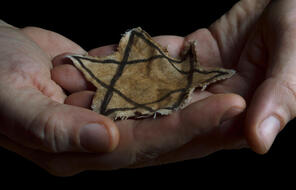
Marched to the Ghetto
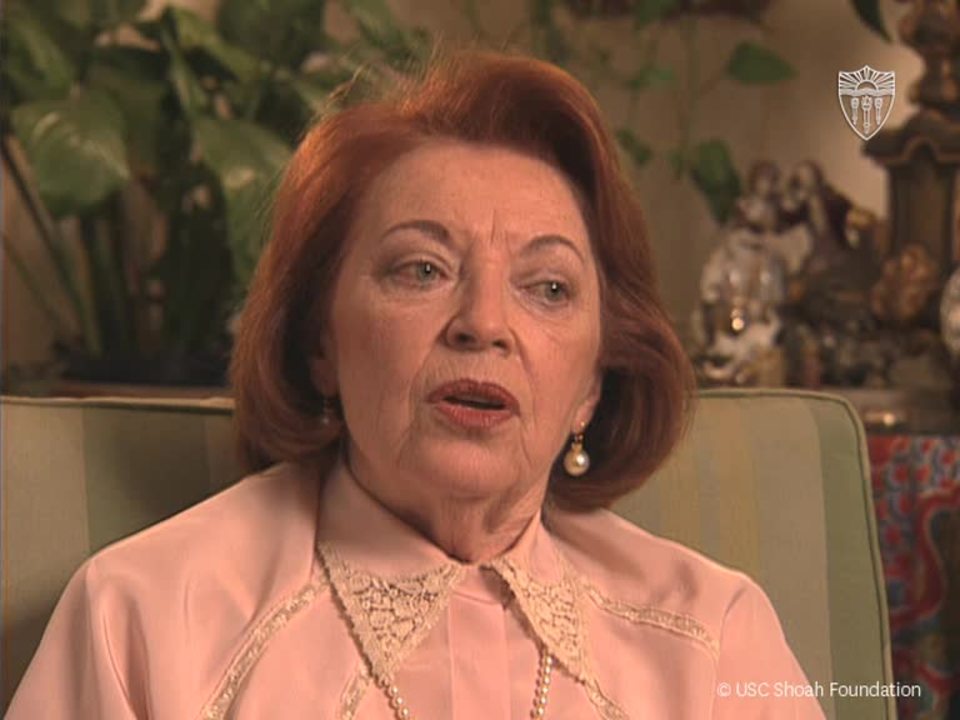
Resources from Other Organizations
Additional Resources
Related Facing History Resources & Learning Opportunities
Antisemitism Resource Collection
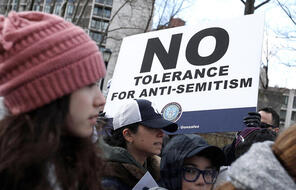
Antisemitism and Its Impacts

Teaching with Testimony
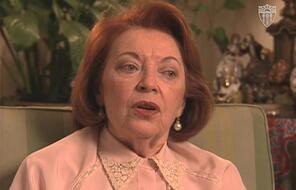
You might also be interested in…
Pre-War Jewish Life in North Africa
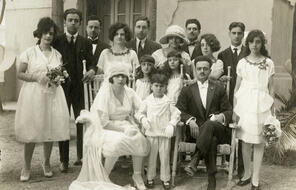
Responses to Rising Antisemitism and Antisemitic Legislation in North Africa
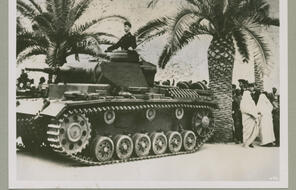
The Holocaust and North Africa: Resistance in the Camps
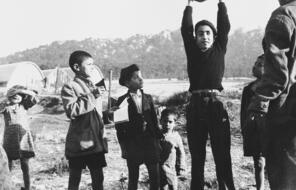
Contextualizing a Found Poem
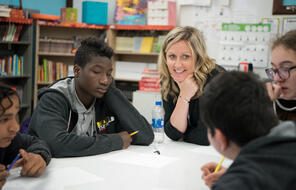
The Holocaust and Jewish Communities in Wartime North Africa
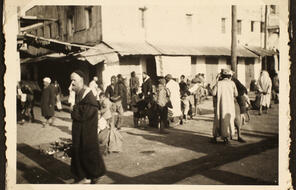
Holocaust and Human Behavior: A Facing History & Ourselves High School Elective Course
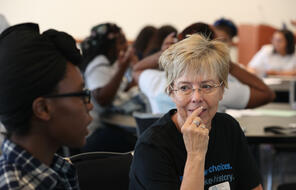
Antisemitic Conflation: What Is the Impact of Conflating All Jews with the Actions and Policies of the Israeli Government?
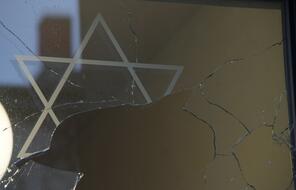
Forging Jewish Identity as a Minority
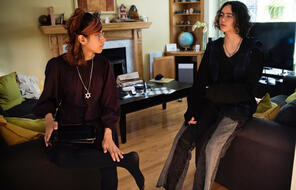
A Part and Apart: Inclusion and Exclusion in Our Jewish Communities
Confronting Online Antisemitism
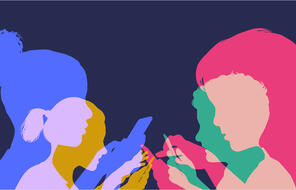
Expressing Diversity in Jewish Identity: Blending In and Standing Out
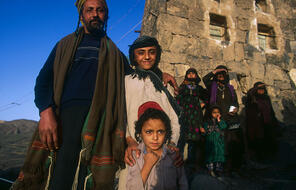
Responding to Rising Antisemitism

Unlimited Access to Learning. More Added Every Month.
Facing History & Ourselves is designed for educators who want to help students explore identity, think critically, grow emotionally, act ethically, and participate in civic life. It’s hard work, so we’ve developed some go-to professional learning opportunities to help you along the way.
Exploring ELA Text Selection with Julia Torres
On-Demand
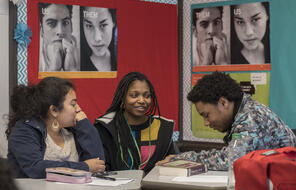
Working for Justice, Equity and Civic Agency in Our Schools: A Conversation with Clint Smith
On-Demand
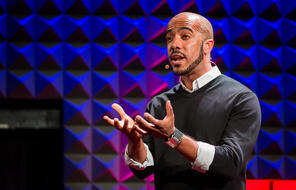
Centering Student Voices to Build Community and Agency
On-Demand
